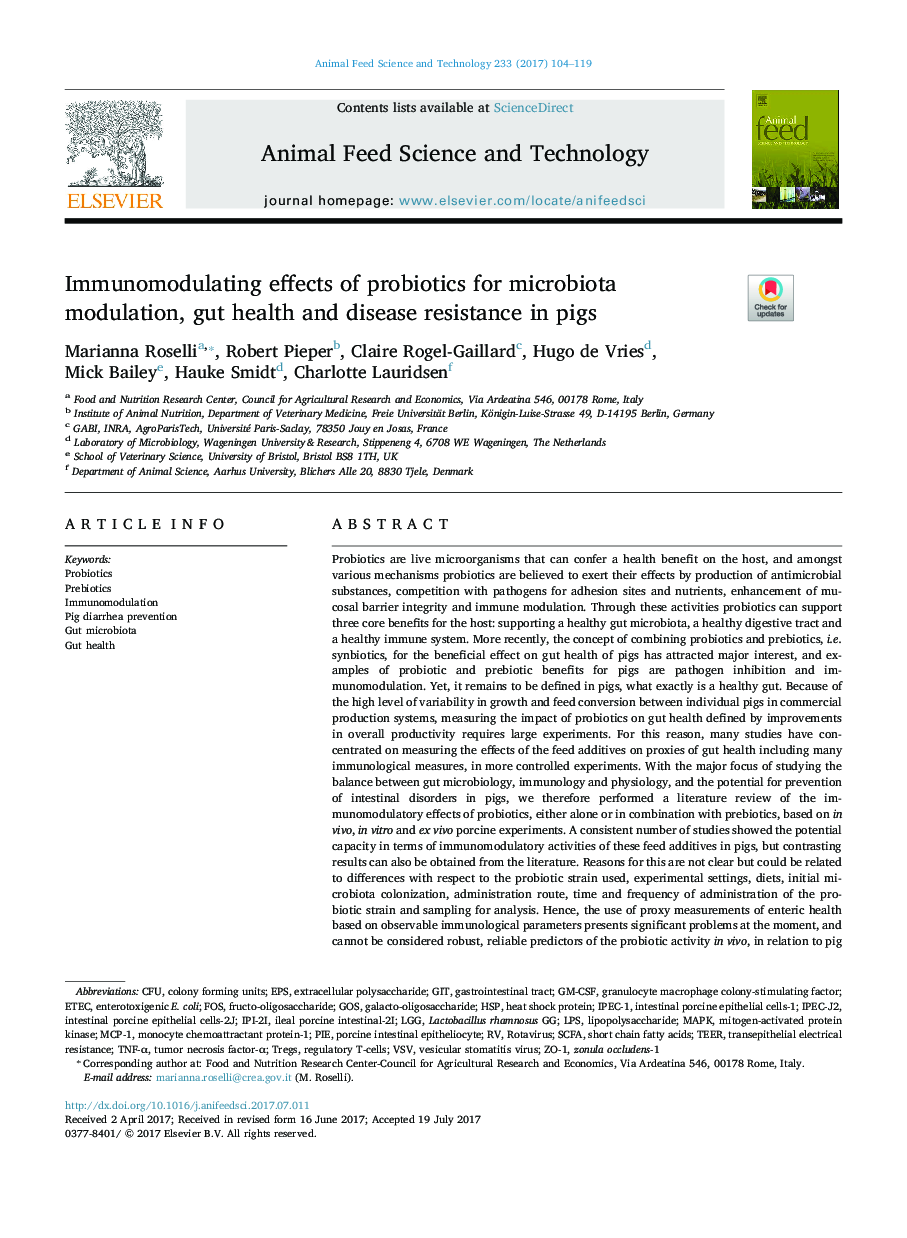| Article ID | Journal | Published Year | Pages | File Type |
|---|---|---|---|---|
| 8491104 | Animal Feed Science and Technology | 2017 | 16 Pages |
Abstract
Probiotics are live microorganisms that can confer a health benefit on the host, and amongst various mechanisms probiotics are believed to exert their effects by production of antimicrobial substances, competition with pathogens for adhesion sites and nutrients, enhancement of mucosal barrier integrity and immune modulation. Through these activities probiotics can support three core benefits for the host: supporting a healthy gut microbiota, a healthy digestive tract and a healthy immune system. More recently, the concept of combining probiotics and prebiotics, i.e. synbiotics, for the beneficial effect on gut health of pigs has attracted major interest, and examples of probiotic and prebiotic benefits for pigs are pathogen inhibition and immunomodulation. Yet, it remains to be defined in pigs, what exactly is a healthy gut. Because of the high level of variability in growth and feed conversion between individual pigs in commercial production systems, measuring the impact of probiotics on gut health defined by improvements in overall productivity requires large experiments. For this reason, many studies have concentrated on measuring the effects of the feed additives on proxies of gut health including many immunological measures, in more controlled experiments. With the major focus of studying the balance between gut microbiology, immunology and physiology, and the potential for prevention of intestinal disorders in pigs, we therefore performed a literature review of the immunomodulatory effects of probiotics, either alone or in combination with prebiotics, based on in vivo, in vitro and ex vivo porcine experiments. A consistent number of studies showed the potential capacity in terms of immunomodulatory activities of these feed additives in pigs, but contrasting results can also be obtained from the literature. Reasons for this are not clear but could be related to differences with respect to the probiotic strain used, experimental settings, diets, initial microbiota colonization, administration route, time and frequency of administration of the probiotic strain and sampling for analysis. Hence, the use of proxy measurements of enteric health based on observable immunological parameters presents significant problems at the moment, and cannot be considered robust, reliable predictors of the probiotic activity in vivo, in relation to pig gut health. In conclusion, more detailed understanding of how to select and interpret these proxy measurements will be necessary in order to allow a more rational prediction of the effect of specific probiotic interventions in the future.
Keywords
TregsGM-CSFTEERHspLGGFOSGOSSCFAMCP-1Lactobacillus rhamnosus GGGITETECZO-1VSVEPSIPEC-J2IPEC-1LPSCFUenterotoxigenic E. coliMAPKregulatory T-cellsShort chain fatty acidsImmunomodulationtumor necrosis factor-αGastrointestinal tractRotavirusGut healthTNF-αfructo-oligosaccharidelipopolysaccharidegranulocyte macrophage colony-stimulating factortransepithelial electrical resistanceGut microbiotaZonula occludens-1colony forming unitsVesicular stomatitis virusPieProbioticsHeat shock proteinmonocyte chemoattractant protein-1mitogen-activated protein kinasePrebioticsExtracellular polysaccharidegalacto-oligosaccharide
Related Topics
Life Sciences
Agricultural and Biological Sciences
Animal Science and Zoology
Authors
Marianna Roselli, Robert Pieper, Claire Rogel-Gaillard, Hugo de Vries, Mick Bailey, Hauke Smidt, Charlotte Lauridsen,
